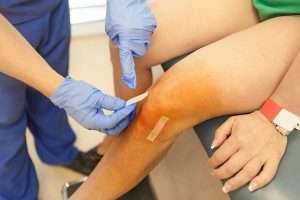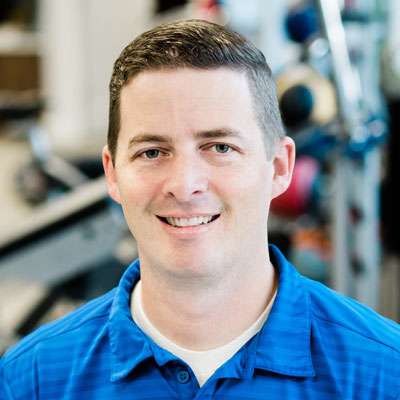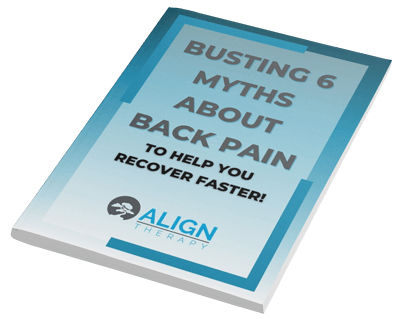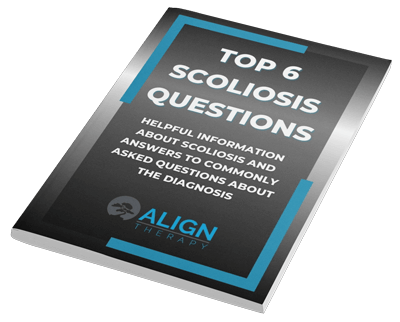I hear so many sayings in Physical Therapy related to pain. See how many of these you have heard. Do you know which ones are correct?
“No Pain, No Gain!”
“Pain is just weakness leaving the body!”
“What doesn’t kill you makes you stronger!” (I know its from a song!)
“What is the difference between a Physical Therapist and a Terrorist? You can negotiate with a terrorist!”
And many more. The truth is that I am not in the business of pain, I am in the business of pain relief. Most of the things we treat, we are trying to get rid of pain, so why is there a conception that we need to go through significant pain to get there?
Why We Think Pain is Necessary
I think a lot of this misconception is due to Physical Therapy related to post operative care. This is where Physical Therapy really started.

When someone goes in for surgery, there is usually pain involved just as a result of the surgery. Then, you add to that getting the body part moving and naturally you will have pain.
For things like rotator cuff repairs, ACL reconstructions, and other surgeries, YES, there will be pain associated with the recovery and rehab. But, when is it too much, and when are we being counterproductive?
Understanding Pain
There are a few things we need to understand about pain to understand the rules we will use to determine if we are causing harm or not. We could go on for days on this subject, but here are the highlights.
- Pain is communication that we are causing, or about to cause, tissue damage. Think about touching a hot stove. The pain is letting your brain know that if you keep it there, you will get burned (tissue damage)
With early stages of injuries, this is true, but when we get into chronic problems, are we really at risk of injury to the tissue? Take chronic low back pain for example. Three years after the injury, is that signal from the back really indicating that you are going to cause tissue injury? Probably not.
- There are different kinds of pain. Hopefully we all have experienced that pain that comes the day following exercise. This is called delayed onset muscle soreness (DOMS) and is much different than the pain you get when you sprain your ankle.
These differences in pain help us to determine what is “good” pain and what is “bad” pain. The time it takes for this pain to come on indicates how we should respond. Also, the quality or feel of the pain helps us to decipher what is causing it.
So, we get to the question of “When is pain ok?” or “How much pain is ok to push through?”.
To this, I answer, IT DEPENDS! (Kind of a cop out answer, but it is all I got!)
Kinds of Pain
Burning and soreness during strength training of a muscle is totally fine, but pain in the shin associated with a stress fracture is a totally different story and needs to be avoided. Here are a couple of thoughts on different tissues and pain.

- Muscle Strains – When dealing with a pulled or torn muscle, it is ok to have some soreness, but this should be mild (0-3/10)
We want to think about what is going on in the muscle. It is healing and the body is trying to repair the muscle fibers. If we stress it too much, we disrupt the healing, create more scar tissue, and start the process over.
- Tendon Injuries – Tendinitis or chronic degeneration in a tendon needs to be treated a little more aggressively. Some increased soreness is usually acceptable. (0-5/10)
Usually these tendon injuries are due to weakening of the tendon and we need to strengthen it to bring it up to the level we are using it at. This requires stress on the tendon to get it to remodel.
- Bone Injuries – Injuries like stress fractures and acute fractures need to be treated gently. We want to avoid pain with these because pain is indicating stress.
With an injury to the bone, we need stress on it to be minimized to allow it to heal. Once healed, we are ok to begin stressing that area, but we need the healing first.
The categories above should help to clarify what we are doing with specific tissues. Now, how do you tell if you are overdoing it?
Soreness Rules
In the clinic, we use some rules that I sometimes call “Soreness Rules” to determine if we are doing too much or too little. This is a good way for patients to gauge what to do at home and when to progress.

These are not absolute, and still are dependent on what we are seeing them for, but for most injuries you can use the following rules.
Soreness during warm up
If it continues or worsens = Take 1 day off and then back off the intensity of the exercise.
If it goes away = Stay at the level of intensity
If it goes away and then comes back during workout = Take 1 day off and then return to same level of intensity.
Soreness the day after the exercise
If it is muscle soreness from exercise = Increase to next level
If it is not muscle soreness = Take 1 day off and return to same level of intensity.
No Soreness = Ok to advance to next level of intensity as instructed.
These “Soreness Rules” don’t apply to ALL situations, but they will help you to get an idea of when to progress and when you should back off.
If you are wondering about your specific condition or injury, PLEASE contact me before working through it on your own. We offer FREE Consultations to give you information on your specific injury.
Therapy, Not Torture
Physical Therapy is not meant to be a painful experience. On the contrary, it is meant to help alleviate your pain. There are many things we do that are meant to reduce pain.

Understanding where the pain is coming from and what it is telling you is crucial to recovering fully. Don’t mistake “good” pain for bad. Even more important, however, is to not mistake “bad” pain for “good” pain.
Need Some Help?
We all experience aches and pains in life. If you are concerned about yours, and want some direction, email me at david@aligntherapyutah.com, or fill out one of our forms on this website.



